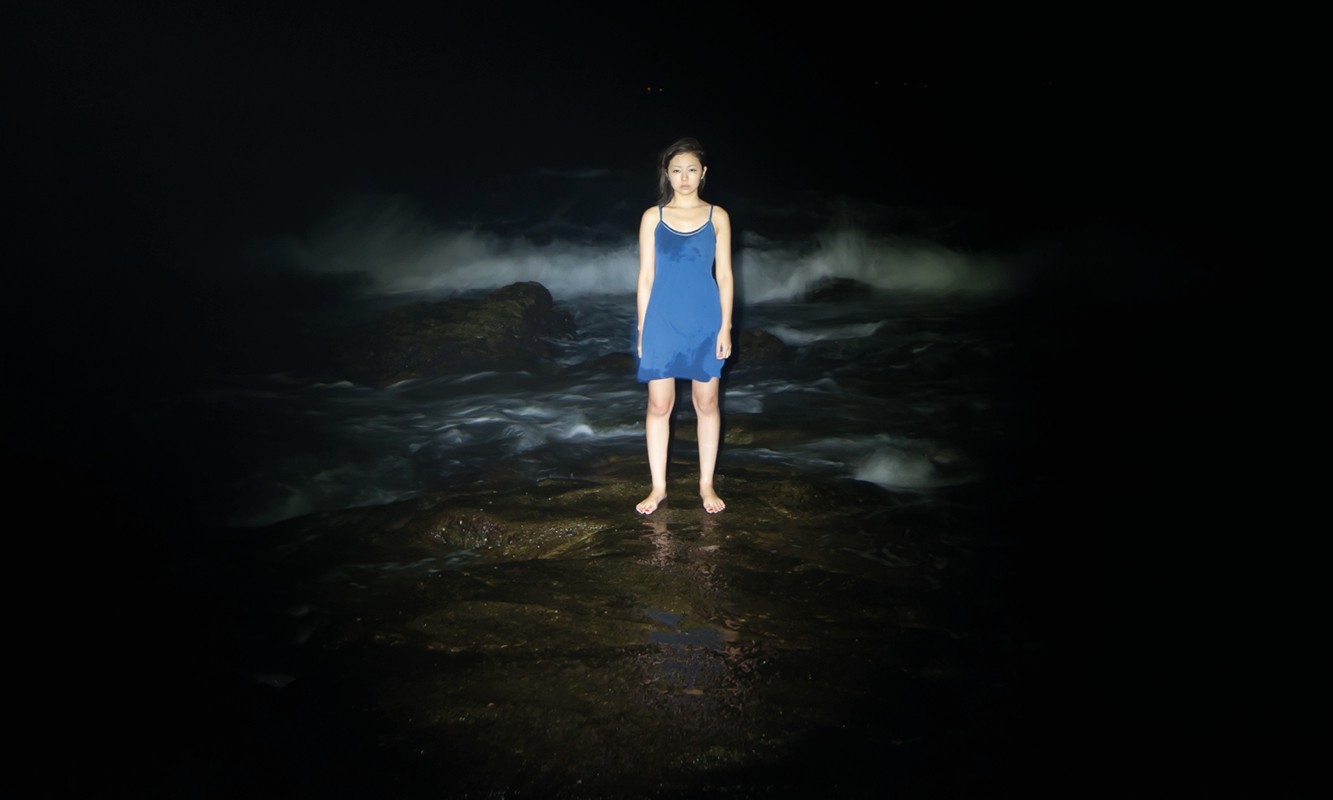In its landmark decision in Appellant S395/2002 v Minister for Immigration,1 the High Court held that refugee applicants cannot be required to conceal their sexual orientation in order to avoid persecution.
During the course of oral argument, Justice Kirby asked senior counsel for the Minister, Stephen Gageler SC (as he then was), this question:2
“[C]ounsel for the applicant has sought to draw an analogy between Anne Frank in her attic and these applicants in their closet. What is your answer? What is the Minister’s answer?”
It was a poignant moment in the hearing. I should know – I was sitting behind Mr Gageler as his instructing solicitor. His answer was incisive:3
“What Anne Frank would fear is either of two things: one is being killed if she comes out of the attic or of being cloistered in the attic potentially for the rest of her life.”
A life of secrecy and concealment of their sexual orientation by LGBTIQA+ people is not a ‘normal’ life.4 Instead, it is a defensive response to the fear of persecution due to their non-conformity to prevailing gender norms. The imposition of a requirement of concealment was based on outdated jurisprudence,5 which did not accord LGBTIQA+ people equal treatment with similarly situated heterosexual people. This discriminatory approach was rejected by the High Court.
Underlying the 1951 Convention Relating to the Status of Refugees and its 1967 Protocol (the Convention) was an international commitment to the equal enjoyment of fundamental human rights. These rights are denied when, by reason of fear of persecution, LGBTIQA+ people are unable to express their sexual orientation through means such as openly cohabitating with a partner – as was the case with Appellants S395/2002 and S396/2002.
In what is now the 20th year since the appeal was filed in 2002, this article offers some timely reflections on the High Court decision and the manner in which claims relating to sexual orientation have subsequently been dealt with by the Refugee Review Tribunal (the RRT) and the Administrative Appeals Tribunal (the AAT).
The RRT decision
The starting point in an examination of Appellant S395/2002 v Minister for Immigration is the decision of the RRT refusing their claims to be refugees.
The RRT accepted that the appellants were homosexuals, who had lived together in Bangladesh between 1994 and 1999. The RRT also accepted that homosexual men in Bangladesh constituted a particular social group within the meaning of the definition of ‘refugee’ set out in the Convention.
The RRT found that “it is not possible to live openly as a homosexual in Bangladesh”.6 However, the RRT made the following crucial finding, which formed the foundation of the appeal:7
“[Appellants S395/2002] and [S396/2002] did not experience serious harm or discrimination prior to their departure from Bangladesh and I do not believe that there is a real chance that they will be persecuted because of their sexuality if they return … [The appellants] lived together for over 4 years without experiencing any more than minor problems with anyone outside their own families. They clearly conducted themselves in a discreet manner and there is no reason to suppose that they would not continue to do so if they returned home now.”
The Minister’s concession
The written submissions in the High Court appeal, made on behalf of the Minister by Stephen Gageler SC and Stephen Lloyd, contained a significant concession:8
“The Respondent does not deny that there may be factual situations in which a Tribunal could find that for a particular applicant it would constitute serious harm amounting to persecution for the person to have to live in a discreet manner so as to conceal his or her sexual orientation. That is … the Respondent does not contend that this can never constitute persecution.”
In this sense, the difference between the appellants and the Minister was not a gulf in principle. The Minister’s submissions rested on the facts of the case.
The High Court decision
By a majority of 4:3, the High Court found that the RRT erred by failing to consider whether the need to act discreetly to avoid the threat of serious harm constituted persecution. Justices McHugh and Kirby explained the error in this way:9
“In cases where the applicant has modified his or her conduct, there is a natural tendency for the tribunal of fact to reason that, because the applicant has not been persecuted in the past, he or she will not be persecuted in the future. The fallacy underlying this approach is the assumption that the conduct of the applicant is uninfluenced by the conduct of the persecutor and that the relevant persecutory conduct is the harm that will be inflicted. In many – perhaps the majority of – cases, however, the applicant has acted in the way that he or she did only because of the threat of harm.”
Their Honours held that, if the RRT had found that if fear of harm had caused the appellants to live discreetly, it would have been necessary then to consider whether their fear was well-founded and amounted to persecution. That would have required the RRT to consider what might happen to the appellants in Bangladesh if they lived openly as a homosexual couple.10
Justices Gummow and Hayne expressed similar reasoning:11
“The Tribunal did not ask why the appellants would live ‘discreetly’. It did not ask whether the appellants would live ‘discreetly’ because that was the way in which they would hope to avoid persecution. That is, the Tribunal was diverted from addressing the fundamental question of whether there was a well-founded fear of persecution by considering whether the appellants were likely to live as a couple in a way that would not attract adverse attention.”
The dissenting judges (Chief Justice Gleeson and, in a separate joint judgement, Justices Callinan and Heydon) concluded that the appellants had never claimed before the RRT that they had lived discreetly due to fear of harm.
Subsequent comments by Justice Gageler
Although there are subtle differences between the two joint majority judgments Appellant S395/2002 v Minister for Immigration, Justice Gageler subsequently encapsulated the unifying principle from the High Court bench in the following terms:12
“The principle for which that case stands is that a fear of persecution for a Convention reason, if it is otherwise well-founded, remains well-founded even if the person concerned would or could be expected to hide his or her race, religion, nationality, membership of a particular social group, or political opinion by reason of that fear and thereby to avoid a real chance of persecution.”
His Honour further observed by reference to a quote from Dyson SCJ in HJ (Iran) v Secretary of State for the Home Department that “[t]he Convention would be failing in its purpose if it were to mean that a gay man does not have a well-founded fear of persecution because he would conceal the fact that he is a gay man in order to avoid persecution on return to his home country”.13
The fate of the appellants after the High Court decision
Appellants S395/2002 and S396/2002 were eventually found to be refugees, but not until 9 January 2015. This was more than 11 years after the High Court decision was handed down.
During this time, the appellants had their refugee claims refused a further three times by the RRT.14 Each of these RRT decisions was subsequently set aside on appeal.15 It was not until their fifth appearance before the RRT that they were finally successful.
Ironically, the fifth RRT ultimately found that the appellants led a relatively private and discreet life in Australia and that it was likely that, if they were to return to Bangladesh, they would continue to act discreetly. However, in view of the fact that it appeared there were a number of people who were aware of the sexuality and relationship, it was likely that, despite discretion on their part, others would become aware of their sexual orientation and relationship.16
Recent sexual orientation claims in the AAT
The lengthy history of Appellants S395/2002 and S396/2002 through the RRT is illustrative of the challenges that refugee applicants making claims relating to sexual orientation often face in satisfying tribunal members of the credibility of their claims. Tribunal members have recently expressed sentiments such as:
“Regarding the applicant’s claims of being in a homosexual relationship under any circumstances it is difficult to test the credibility of such claims.”17
“It may be easy to assert such claims, yet difficult for applicants to substantiate and for decision-makers to evaluate.”18
Andrew Loomes has conducted a study of 11 publicly available decisions of the AAT, handed down in 2021.19 He examined how the AAT approached credibility assessments, including factors such as the use of stereotypes, picture evidence and delay.
Stereotypes
In assessing a refugee applicant’s credibility, tribunal members may be affected (consciously or subconsciously) by inappropriate and unrealistic stereotypes. As Federal Magistrate Rapheal observed in WAAG v Minister for Immigration, the questions asked by tribunal members can:20
“reveal a pre-formed template into which the Tribunal considered all homosexual males would fit and that if an applicant who claimed to be a homosexual did not respond appropriately to these questions he must ipso facto not be a homosexual.”
In that case, the applicant was unaware of purported gay ‘icons’ such as Madonna or Oscar Wilde21 In other cases, applicants have been unfamiliar with the details of prominent LGBTIQA+ celebrations such as Mardi Gras.22
Loomes concluded that stereotypes still influenced the reasoning in a number of the case studies from 2021.23
Picture evidence
The UNHCR Guidelines state that “[a]pplicants should never be expected or asked to bring in documentary or photographic evidence of intimate acts”.24 However, with little other documentary evidence to prove their claims, refugee applicants continue to rely on pictures to evidence their sexual orientation. This is especially the case where there has been a negative assessment of the applicant’s credibility.
Loomes noted that refugee applicants relied on picture evidence in five of the 11 case studies, but that the AAT tended not to attribute them any positive weight.25
Delay
Refugee applicants may hesitate to raise their sexual orientation for a number of reasons, including:26
- their discomfort in discussing such a personal topic in the presence of unfamiliar authority figures
- their lack of awareness that they may claim protection on the basis of their sexual orientation, and
- fear that their disclosure will not be confidential and have repercussions if the information is discovered by family, friends and state authorities.
Loomes observed that tribunal members do not always accept these circumstances as reasonable explanations for a refugee applicant’s delay, instead viewing the delay as evidence of untruthfulness.27
Conclusion
Going into the hearing in Appellant S395/2002 v Minister for Immigration, I anticipated in light of the Minister’s concession that the High Court’s decision was likely to include an important statement of principle, irrespective of which party was successful on the facts of the case. What I could not have anticipated was that it would take over a decade for Appellants S395/2002 and S396/2002 to receive a final outcome on their refugee applications.
Many of the criticisms made by Loomes (and others)28 may well have been avoided through greater use of best practice guides, such as the one produced by Kaleidoscope Australia titled Looking through the Kaleidoscope: A guide to best practice in determining applications for refugee status based on sexual orientation, gender identity of intersex grounds.29 It is certainly positive that one tribunal member in the 2021 decisions made specific reference to the need for greater understanding of diversity experiences:30
“The Tribunal recognises that there can be a diversity of individual experiences of sexuality and differences related to culture, socio-economic and education background and other factors. The Tribunal needs to be sensitive and appropriate in the manner in which it explores these issues and the benefit of the doubt should be given to an applicant who is generally credible but unable to substantiate all of his or her claims.”
In addition to assisting decision makers to properly and fairly assess refugee applications relating to sexual orientation, the Kaleidoscope guide also provides practitioners with a tool to assist them to effectively represent refugee applicants in their claims.
Glen Cranwell is a former member of the Migration Review Tribunal and Refugee Review Tribunal, and the Migration and Refugee Division of the Administrative Appeals Tribunal. The views expressed are those of the author.
Footnotes
1 [2003] HCA 71.
2 Appellant S395/2002 v Minister for Immigration and Multicultural Affairs [2003] HCATrans 664.
3 Ibid.
4 As to what is a ‘normal’ life, see Catherine Dauvergne and Jenni Millbank, ‘Applicants S395/2002 and S396/2002, a gay refugee couple from Bangladesh’ (2003) 25 Sydney Law Review 97, 107.
5 See, for example, LSLS v Minister for Immigration and Multicultural Affairs [2000] FCA 211; F v Minister for Immigration and Multicultural Affairs [1999] FCA 947.
6 [2003] HCA 71, [25].
7 Ibid, [9].
8 Respondent’s supplementary submissions filed on 7 April 2003, [20] (emphasis in original).
9 [2003] HCA 71, [43] (emphasis in original).
10 Ibid, [53].
11 Ibid, [88].
12 Minister for Immigration and Border Protection v SZSCA [2014] HCA 45, [36] (footnotes omitted).
13 [2010] UKSC 31, [110] (emphasis in original).
14 1302208 and 1302210 [2015] RRTA 40, [6]-[8].
15 See, for example, NAOX v Minister for Immigration [2009] FCA 1056.
16 1302208 and 1302210 [2015] RRTA 40, [138]-[139].
17 1724111 [2021] AATA 684, [64].
18 1718354 [2021] AATA 1859, [15].
19 Andrew Loomes, ‘Claims to refugee protection on the basis of sexual orientation: Time to change the definition?’ [2021] UNSW Law Journal Student Series No.33.
20 [2002] FMCA 191, [23].
21 Ibid, [10].
22 SZTGV v Minister for Immigration and Border Protection [2015] FCAFC 3, [101].
23 See, for example, 2013019 [2021] AATA 1546, [110]; 1718354 [2021] AATA 1859, [78].
24 UNHCR GUIDELINES ON INTERNATIONAL PROTECTION NO.9: Claims to Refugee Status based on Sexual Orientation and/or Gender Identity within the context of Article 1A(2) of the 1951 Convention and/or its 1967 Protocol relating to the Status of Refugees (2012), [64].
25 See, for example, 1724111 [2021] AATA 684, [64]; 1718354 [2021] AATA 1859, [85], [121]; 2013019 [2021] AATA 1546, [111].
26 Andrew Loomes, ‘Claims to refugee protection on the basis of sexual orientation: Time to change the definition?’ [2021] UNSW Law Journal Student Series No 33, 13-14.
27 2013019 [2021] AATA 1546, [42]. See also Migration Act 1958 (Cth), s423A.
28 See, for example, Jenni Millbank, ‘Sexual Orientation and Gender Identity in Refugee Claims’ in Cathryn Costello, Michelle Foster and Jane McAdam (eds), The Oxford Handbook of International Law (Oxford University Press: 2020).
29 Kaleidoscope Australia, Looking through the Kaleidoscope: A guide to best practice in determining applications for refugee status based on sexual orientation, gender identity of intersex grounds (2015).
30 2018109 [2021] AATA 1640, [64].









Share this article